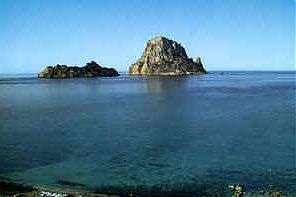Completed Projects
- ENVIRONMENTAL STUDY OF THE ISLAND OF IBIZA
- ENVIRONMENTAL STUDY OF THE ISLAND OF FORMENTERA
- ANALYSIS OF THE GEOELECTRIC MEDIATIONS IN THE AREAS WITH WATER WELLS OF SA GRAVADA - ROCA LLISA, IBIZA
- STUDY OF THE ISLETS OF TAGOMAGO, SANTA EULALIA AND REDONDA.
- COMPARATIVE ENVIRONMENTAL STUDY BETWEEN THE ISLANDS OF HAWAII AND THE BALEARICS
- THE MANAGEMENT OF SOLID WASTE DISPOSAL ON THE ISLAND OF IBIZA
- EVALUATION OF THE NOISE OF THE AIRPLANES IN THE URBANIZACION OF ROCA LLISA. PART 1: DIAGNOSIS OF THE PRESENT SITUATION.
- EVALUATION OF THE NOISE OF THE AIRPLANES IN THE URBANIZACION OF ROCA LLISA. PART 2: CONSEQUENCES.
- TOURISM AND ENVIRONMENT ON THE ISLAND OF IBIZA
- STUDY OF THE EVOLUTION OF THE ARTIFICIAL REEF OF THE BAY OF SANTA EULALIA
- EVALUATION OF THE EFFECTIVENESS OF THE ARTIFICIAL REEF OF THE MIGJORN BEACH IN RELATION TO THE MANAGEMENT OF THE FISHING ON THE ISLAND OF FORMENTERA
- ENVIRONMENTAL STUDY OF ROCA LLISA
- THE NYIRAGONGO, A VERY ACTIVE VOLCANO IN NORTH-KIVU AND ITS SURROUNDINGS
STUDY OF THE ISLETS OF TAGOMAGO, SANTA EULALIA AND REDONDA.
The main object of this project is a scientific and ecological study of 3 islets situated off the coast of Ibiza: Tagomago, Santa Eulalia and Redonda. The aim is to evaluate the present state of the maritime and terrestrial ecosystem of these islets, and their problems.
Previous studies have been carried out in the islets on the south and west coast of Ibiza, albeit those studies were primarily concerned with the terrestrial ecosystem.
This study forms part of a more ambitious project whose aim is to make an environmental study of the most relevant islets to the Pitiusas.
This sort of project aims to provide a basis for future and more exhaustive studies which would serve as a framework for a future plan of complete management.
The study differentiates between the terrestrial and the marine ecosystems. In both cases fieldwork was carried out, measurements taken “in situ” and samples collected for mater laboratory analysis.
Terrestrial Ecosystem
The study of the terrestrial ecosystem has been carried out by visits to the islets, observation of the vegetation, fauna, type of soil, geology, etc. As well as taking into consideration other factors related to the deterioration of the above mentioned (usually as a rest of human activity) and also looking at indicators which determine the state of the various communities.
Marine Ecosystem
Completely different equipment was required for the study of the aquatic ecosystem and it was necessary to use scuba diving gear as well as various instruments needed for the collection of data, i.e. special pens and boards to use under water, cables, torches, boxes for collecting specimens, underwater photography equipment, etc.
This study of the marine ecosystem is primarily based on the study of Bentos. These organisms, attached to the substrata are the most useful, as an aid to determine the different habitats, which could not be done with Necton due to its propensity to move from one area to another which does not always provide a stable environmental data. Eleven perpendicular transects of the coast were made up to a depth of 30m., choosing the most representative areas of each islet.
For the surface area a description of the flora and fauna of the 3 islets is given emphasizing to more important species, either for reasons of their endemic character or their relevance to the terrestrial ecosystem.
In the marine ecosystems the following features are studied:
a) The distribution of the individual Benthic communities.
b) The presence and spread of individual species.
c) The bio-diversity as well as the presence of indicators which give us better information as to their state.
A table of values for each transaction and islets has been elaborated giving information to both biological as well as human activity. Due to its importance, particular notes have been made of the invasion of the algae, Lophocladia Lallamandii, and the impact of tourism on the islets.
The islets who enjoy a better state of conservation are Sta. Eulalia and Redonda. That does not imply that measures should not be taken to ensure their adequate conservation and recuperation. The islet of Togomago is most urgently in need of effective action to prevent an even greater deterioration and to help recuperate its natural attractions.
These islets are of particular interest and it is confirmed by their inclusion in the list of ANEA (Natural Area of Special Interest) and Togomago, in particular, by its inclusion in ZEPA (Special Protected Area of Birds,) however at the moment they display a state of deterioration due in great part to over-fishing, contamination and the massive tourism during the summer months.
Within the marine communities of special note is the state of the beds of Posidonia and the invasion of the algae Lophocladia.
It is a conclusion of this survey that these zones require legal status regarding their conservation which would impede their present deterioration and make it possible to conserve them in an effective and sustainable manner.
Due to the conservation experience in other maritime-terrestrial zones, both within the Mediterranean area and outside it, it is urgent that action of this type be taken for the islets which are the subject of this study or for a zone of greater amplitude which surrounds them.
Diario de Ibiza - Event's notification
Diario de Ibiza (Article in Spanish)
Ibiza Diving - Puerto Deportivo Santa Eulalia
BC Betacar - Europcar
Clinica del Rosario - Grupo Policlinica
Hotel Sol Loros
Home | Projects | Activities | Universities | Sponsors | Forum | Contact us




